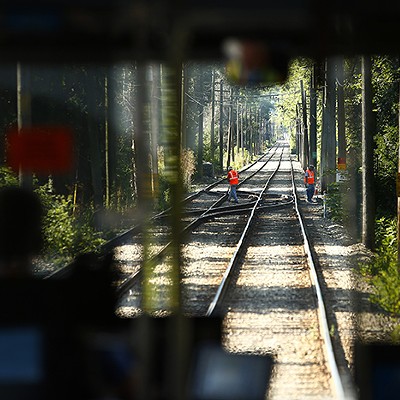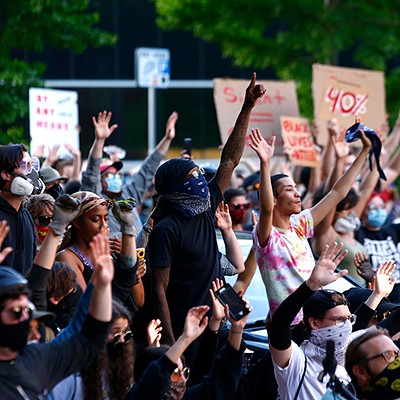An informal "census" shows growing gaps among Pittsburgh childcare centers
Twice a year, I crisscross the suburbs of Greater Pittsburgh in my dinged-up sedan, passing out flyers for a youth soccer program that I coach. In the summer, I hit nearly 100 preschools and daycares, and in the winter, I make it to about half that.
As I visit the same places over and over again, I can’t help but observe changes. Are they hiring? Did they upgrade their intercom? Who opens the door?
I’d never answered that last question with “a police officer” until earlier this month.
He was as polite as any teacher, but I couldn’t shake a feeling of dejection as I drove away, which deepened under the suspicious eye of a parked security guard. The adventures of a personified soccer ball had to pass through a man with a gun.
The results of my unofficial census can often feel bleak.
For one, the hardening of childcare centers feels like an admission of defeat, as though we’re helpless to stop gun violence and must instead keep children under lock and key. In fairness, what else are directors supposed to do besides look out for families?
More and more, kids play behind remote-operated double doors and Ring-style intercoms, particularly at well-funded schools. That same day, one of these systems prompted me to leave a message, so I gazed into the camera and stated my business to no one in particular. It feels like I used to get buzzed in more.
A small contingent of places still rely on a deadbolt.
One of these deadbolt types is situated just north of Pittsburgh proper, run by a woman as frazzled as she is caring. With the help of a few other teachers, she watches over two dozen or so kids ranging from infants to school-agers. When I show up, she beckons me in and shuts the door, lest I vanish to a wealthier neighborhood.
Here, playtime happens in a few well-decorated, but unremarkable rooms. There’s also an outdoor area — a narrow strip of turf fenced in between two buildings. I once coached a program there at a discount, and I’ve never had a better crowd.
I wonder what’s lost for kids who don’t get spacious outdoors areas and constant enrichment.
Families seem to know what they want, as long as they can afford it. Take the Goddard School, for example: a slick national chain with locations boasting rock walls, art studios and full service kitchens. The company doesn’t post its tuition rates online, but its services seem to be in demand, whatever the price.
Last year, the company opened its 600th location, including eight nearby. They’re mostly in places wealthier and whiter than the median, like Upper St. Clair and Moon.
Still, many kids learn and play at faith-based preschools (like I did almost 20 years ago), which range from shoestring operations to as good as any Goddard. I’m still struck by an experience I had after delivering flyers to a Jewish preschool last summer.
As I idled in front of the synagogue to plan my next delivery, a man tapped on my window. He asked, “what are you doing here?”
The accusation caught me off guard, and I bumbled through an explanation about the flyers. His face loosened, and he replied with something about never being too safe these days.
Of course none of this matters — the security, the inequity, the fear — if there’s nowhere for children to go in the first place. Four times, I’ve arrived at a center in the Alle-Kiski Valley only to learn that it closed or combined with another school.
When experts fret about a “childcare crisis,” this is what they mean — costs bringing families to the brink of ruin as centers operate on the thinnest of margins.
The median cost of childcare is $339 per child, per week for Pennsylvania families, according to Penn State’s 2022 Child Care Market Rate Survey. That same report found that more than two-thirds of centers have ”unfilled staff vacancies that reduce the number of children that can receive care,” due to mandatory staffing ratios. An average statewide wage of $12.43 means childcare worker isn’t the most attractive job.
When providers can’t find the funds to hire more staff and parents don’t have the money to fill that gap, kids lose out.
This is where I’d ask you to call your representative, or something. I got out of that business a few years ago when opinions ceased to be my main gig, but do, if you feel so inclined.
I write this simply as a dispatch from someone who’s been in and around more than 100 childcare centers. If parents and teachers are not to blame for the strain on our childcare system, then folks who have no idea what goes on inside these places might.



















